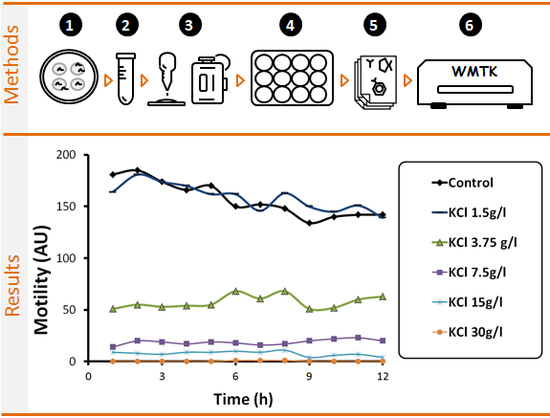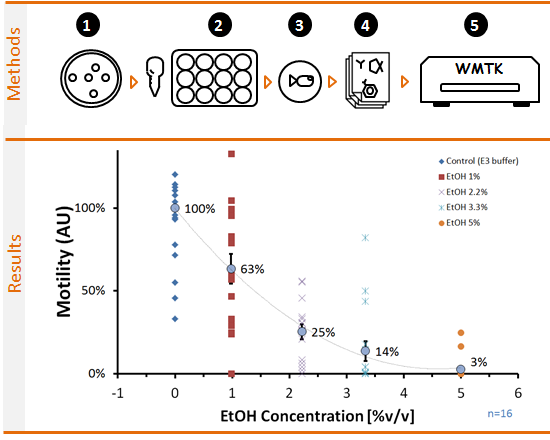

The evaluation of the safety of new chemicals and pharmaceuticals requires a combination of information from various sources (e.g. in vitro, in silico and in vivo) to provide an assessment of the risk to human health and the environment. Toxicological assays using alternative animal models, such as Zebrafish, Drosophila or C.elegans, allow to test more compounds while reducing expenses and using fewer mammals. Below, we show some examples using our WMicrotracker system.
Animal behavior depends upon integrated processes at the subcellular, cellular, and organismal level, and thus is susceptible of disruption by a broad spectrum of chemicals. Locomotor behavior (movement) of the small free-living nematode C.elegans has proven to be useful in assessing toxicity. We can find literature about it in the field of Ecology, Pharmacology, Nanotechnology, Agrochemistry, drug development and many others.
Toxicity measures are easily implemented using our WMicrotracker system. Below you'll find a procedure example.

In this experiment we can observe the effect of increasing concentrations of KCl in young adults N2 C.elegans. The recording of 12h of activity shows an immediate effect of this salt on behavior and deleterous effect at doses higher than 3.75g/l. Control worms were cultured in K buffer (32 mM KCl, 51 mM NaCl. Ref: Williams P).
Zebrafish (Danio rerio) is increasingly being employed for evaluating toxicity and drug discovery assays. Global swimming behavior could be a simple readout for toxicity, easy to scale-up in automated experiments. This approach is potentially applicable for fast ecotoxicity assays and whole-organism high-throughput compound screening, reducing the time and money required to evaluate unknown samples and to identify leading pharmaceutical compounds.
Fish toxicity measures are easily implemented using our WMicrotracker system. Below you'll find a procedure example.

In this experiment we can observe the effect of EtOH on zebrafish’s larvae behavior after 48h of drug exposure. The plot shows the average activity and the natural variability of response between animals (n = 16 per treatment).